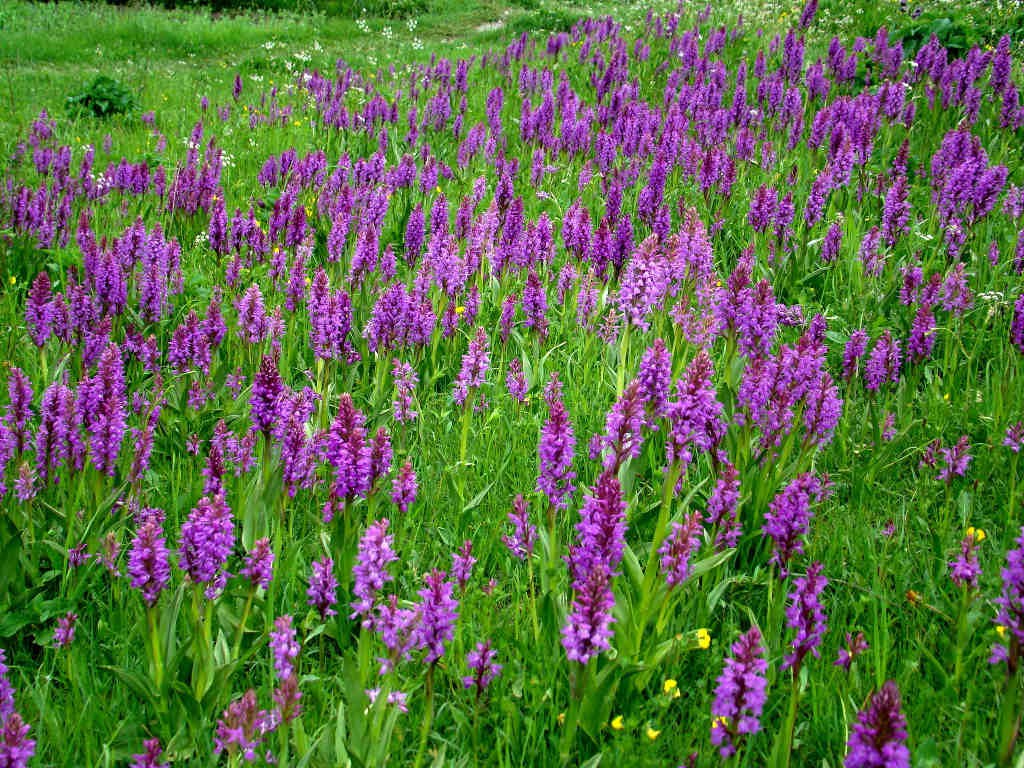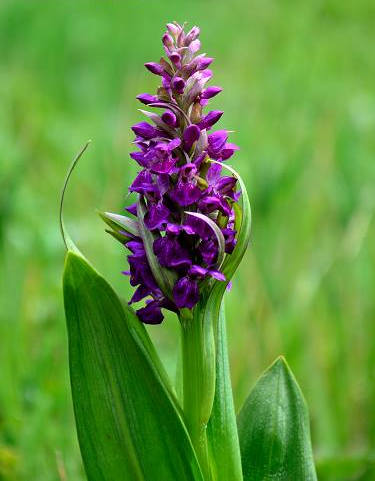
Dactylorhiza hatagirea (Salam Panja)
Dactylorhiza hatagirea, locally known as Salam Panja, is a high-altitude medicinal orchid found in the Great Himalayan National Park (GHNP). This rare and endangered herb is revered in traditional Himalayan medicine for its powerful healing properties and is also recognized for its ecological importance.
Habitat in GHNP
Salam Panja grows in:
-
Moist alpine meadows
-
Open grassy slopes
-
Sub-alpine and alpine regions between 2,800 and 4,200 meters
Within GHNP, it is primarily located in the higher reaches of the Sainj and Tirthan valleys, where the climate and soil conditions are ideal for its growth.
Botanical Features
-
Leaves: Long, narrow, and arranged in a basal rosette
-
Flowers: Purple to pink, arranged in dense spikes
-
Roots: Palmate (hand-shaped) tubers, which give the plant its local name “Salam Panja” meaning five-fingered claw
-
Height: Up to 45 cm tall
The distinct shape of its tubers is not only a botanical identifier but also a key reason for its high demand in Ayurvedic and Tibetan medicine.
Medicinal Uses
| English Name | Himalayan Marsh Orchid |
| Local name | Salam Panja/Hath-Panja |
| Botanical name | Dactylorhiza hatagirea |
| Family | Orchidaceae |
| Distribution | Common in grassy meadows and on slopes of Tirthan, Sainj and Jiwa Nal. Rare in alpine slopes. |
| Description | It is a glabrous, terrestrial, robust tuberous herb of height 20-50 cm. Tubers palmate, divided into 2 or 3 like processes. Leaves oblong or oblong –lanceolate. Flowers are pink or purple, in dense flowered spikes. Bracts acuminate, much longer than the flowers |
| Flowering | June-August |
| Uses | The tubers are important ingredient of many Ayurvedic and Unani preparations and therefore, collected by the local people for sale. The large –scale exploitation may lead to its extinction from the natural habitat |
Dactylorhiza hatagirea is used traditionally for:
-
Treating respiratory disorders
-
Boosting immunity and vitality
-
Healing gastric ulcers and wounds
-
Supporting postpartum recovery
Its roots are rich in mucilage, starch, and alkaloids, making it a potent natural remedy, though its collection is now heavily restricted due to conservation concerns.
Conservation and Threats
This species is listed as endangered due to overharvesting and habitat loss. GHNP offers a protected habitat, but illegal collection and climate change still pose risks. Conservation programs within the park are working toward community awareness and stricter enforcement.




